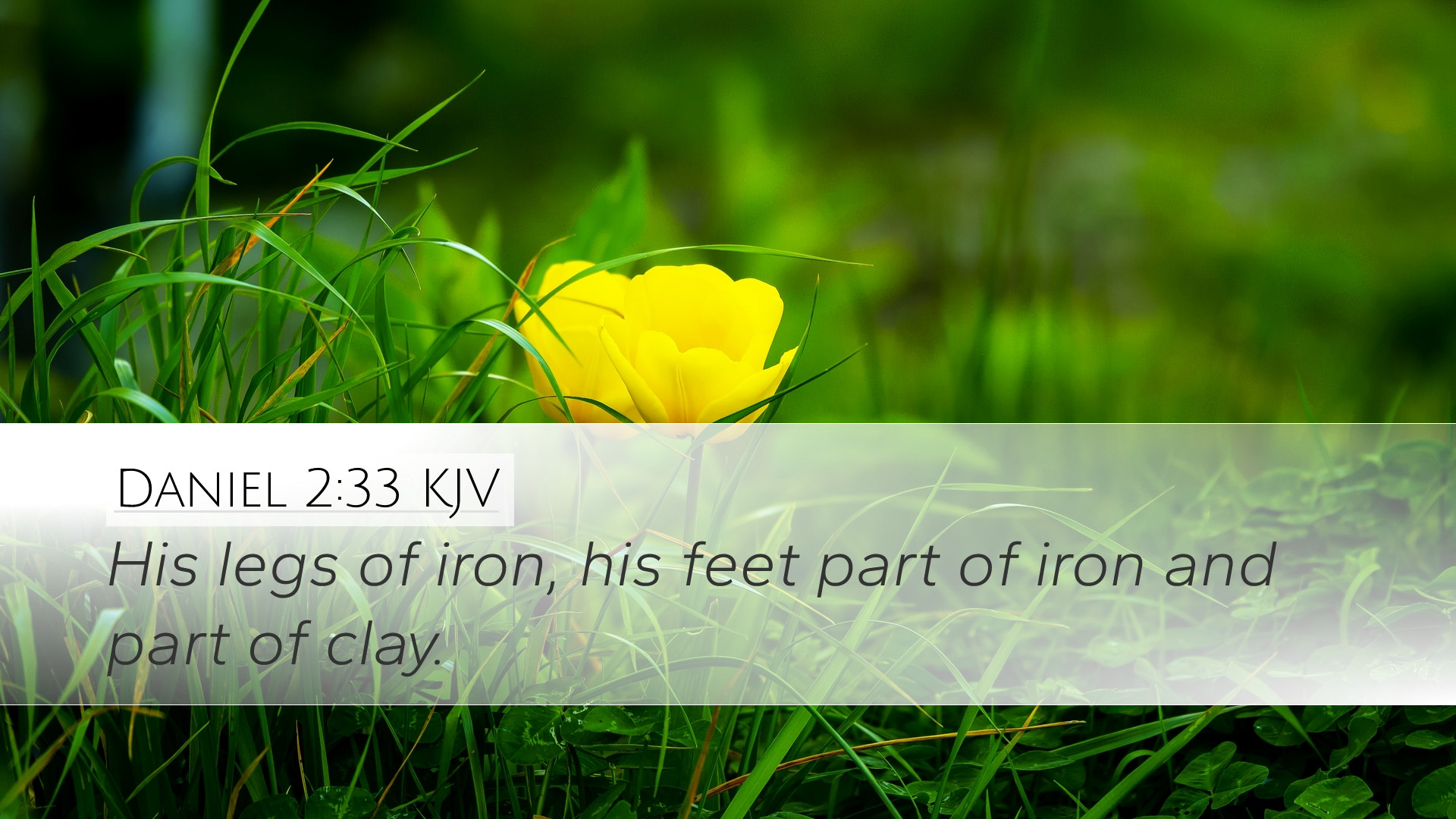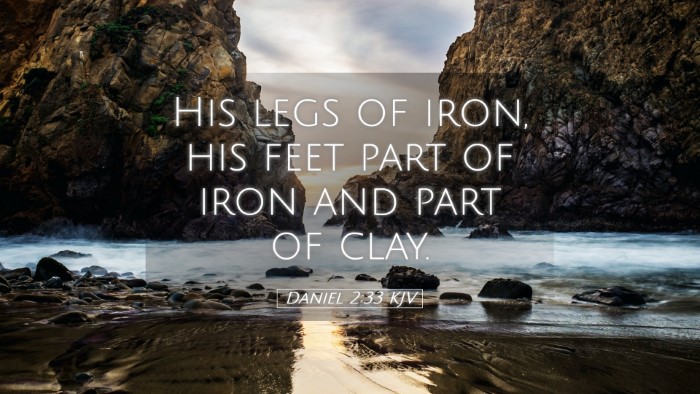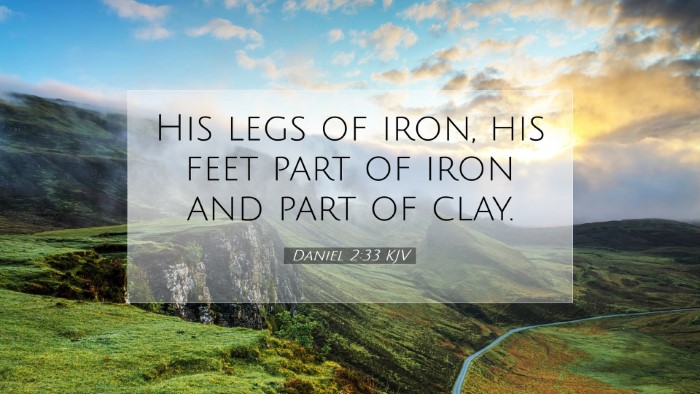Commentary on Daniel 2:33
Bible Verse (Daniel 2:33): "Its legs of iron, its feet partly of iron and partly of clay."
Contextual Background
Daniel chapter 2 presents a pivotal moment in the book, depicting a prophetic dream experienced by King Nebuchadnezzar. This dream symbolizes the successive kingdoms of the world. Daniel, blessed with divine insight, provides the interpretation, which elaborates on the nature and implications of these empires.
The specific verse, Daniel 2:33, describes the representation of the fourth kingdom depicted by the image's legs and feet, with details that are essential for understanding the final condition of human empires.
Interpretation of the Image
In this vision, the image stands as a representation of the kingdoms of the world from Daniel's time to the end. The metals symbolize various empires:
- Head of Gold: Babylon (Nebuchadnezzar's kingdom)
- Chest and Arms of Silver: Medo-Persian Empire
- Thighs of Bronze: Greek Empire
- Legs of Iron: Roman Empire
The legs of iron signify the strength and durability associated with the Roman Empire, noted for its military prowess and legal structures. The iron symbolizes the brutality and might of this kingdom, indicating its ability to crush and subdue.
Feet Partly of Iron and Partly of Clay
The feet of iron and clay present a complex image. The mixture signifies a division within this final kingdom: strength mingled with weakness. The interpretation is twofold:
- Political Fragmentation: The empire would be powerful yet divided, illustrating instability in governance and unity.
- Moral and Social Enfeeblement: The clay signifies the fragility reflecting moral and spiritual decay alongside the residual strength of iron.
This duality heralds a future where power robustly exists yet is pervaded by conflict and dissent among diverse elements.
Theological Implications
This vision, particularly in verses such as Daniel 2:33, extends beyond mere historical insight; it is laden with theological significance.
The mixture of iron and clay serves as a metaphor for the nature of human governance. It reflects the inherent instability and failed attempts at unifying diverse nations and ideologies. As remarked by Albert Barnes, it underscores the reality of earthly kingdoms that are doomed to fail apart from divine sovereignty.
Furthermore, Daniel’s vision points towards a coming kingdom:
- The Kingdom of God: This will ultimately replace all earthly kingdoms, as later revealed in the dream interpretation.
- Christ's Reign: The establishment of a divinely sovereign kingdom provides hope and encourages faith amid tumultuous times.
Practical Applications for Believers
For pastors and theologians, the insights from verses like Daniel 2:33 invite reflection on the current state of global governance and the transient nature of political powers.
Key takeaways include:
- Recognizing the impermanence of earthly pursuit of power.
- Understanding that ultimate authority is held by God, who oversees the course of history.
- Encouraging believers to align their priorities with the values of God's kingdom, contrasting with societal norms of division and weakness.
The call for spiritual vigilance is clear; just as iron holds strength, believers are called to embody the strength of faith, tempered by the humility symbolized by clay.
Conclusion
Daniel 2:33 serves as a critical historical and prophetic verse within the biblical narrative. It provides insights for understanding the interplay between power, governance, and divine sovereignty. As believers reflect upon these truths, they are encouraged to remain steadfast in faith, recognizing that God's ultimate plan prevails over the fleeting nature of human empires.


